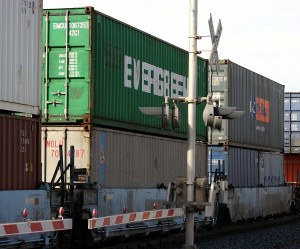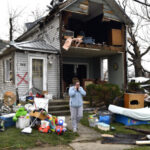The number of people killed in train-related accidents in Kansas has remained steady in the past 20 years although there has been a dramatic decrease in such fatalities nationwide, according to federal statistics.
About 16 people were killed by trains in Kansas every year from 1992 to 2011 – 19 in the first 11 months of 2010 – but nationally train-related fatalities dropped from 1,170 to 644 in the same period, the Federal Railroad Administration said.
Kansas’ poor performance comes despite efforts to educate the public through safety seminars and the addition of more gates and lights at intersections. Advocates are stumped as to why the state’s numbers haven’t dropped.
“Your guess is as good as mine,” said Darlene Osterhaus, director of the train-safety organization Kansas Operation Lifesaver, which offers rail safety workshops.
 Nearly half the collisions occur at intersections equipped with gates or warning devices, Osterhaus told The Lawrence Journal-World reported. She said some drivers drive around the gates or slide through intersections if road conditions are hazardous.
Nearly half the collisions occur at intersections equipped with gates or warning devices, Osterhaus told The Lawrence Journal-World reported. She said some drivers drive around the gates or slide through intersections if road conditions are hazardous.
In Kansas, about 65 percent of the nearly 5,200 train crossings are equipped only with stop signs or “crossbucks,” the white X sign with “railroad crossing” written on them, said Mitch Sothers, engineer with the Kansas Department of Transportation.
He said federal funding for other warning devices is limited and KDOT is able to add warning devices only to about 50 train crossings per year.
Marmie Edwards, spokeswoman for the national branch of Operation Lifesaver, said the percentage of train crossings with warning devices in the states varies from 20 percent to 50 percent, and that it wouldn’t be economically feasible to place devices at all crossings nationwide.
About a quarter of train-related fatalities in Kansas occur when people walk along the tracks, although it is not clear how many of those are suicides, Edwards said.
In the non-suicide cases, Edwards said the public thinks of slow moving trains that go through small towns at 30 or 40 mph. But trains are going faster now and in a state like Kansas, they move through frequently, she said.
“The public hasn’t caught up with that,” she said. “There’s still a ways to go.”
Was this article valuable?
Here are more articles you may enjoy.

 South Carolina Allows Out-of-State Adjusters After Massive Hail Storm
South Carolina Allows Out-of-State Adjusters After Massive Hail Storm  SC High Court Strikes ‘Troubling’ Denial of Comp Claim, Says Can’t Be Based on Stats
SC High Court Strikes ‘Troubling’ Denial of Comp Claim, Says Can’t Be Based on Stats  Gallagher: Global Insured Natural Disaster Claims Again Dominated by Severe U.S. Storms
Gallagher: Global Insured Natural Disaster Claims Again Dominated by Severe U.S. Storms  Jury Awards $80M to 3 Former Zurich NA Employees for Wrongful Termination
Jury Awards $80M to 3 Former Zurich NA Employees for Wrongful Termination 